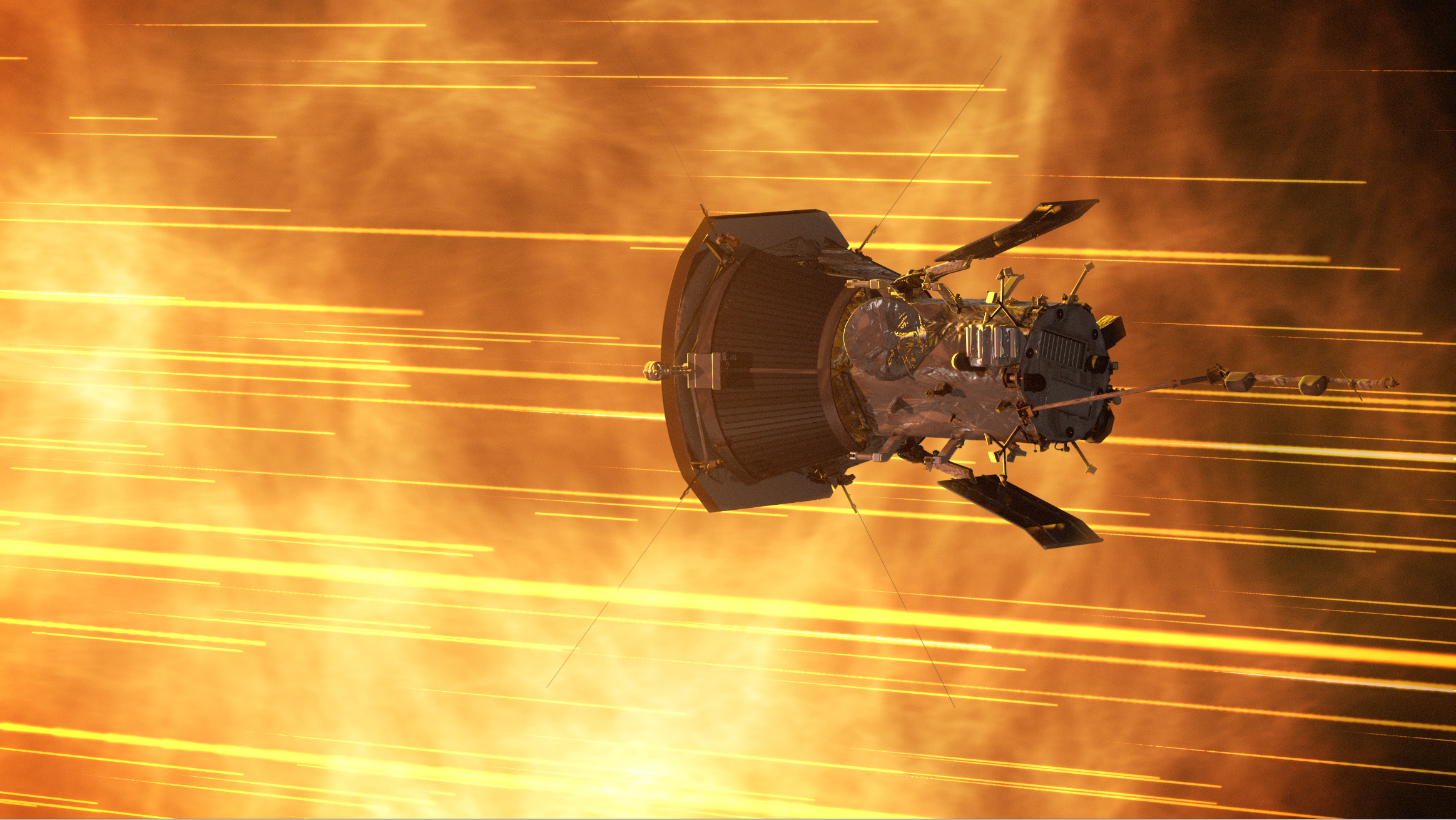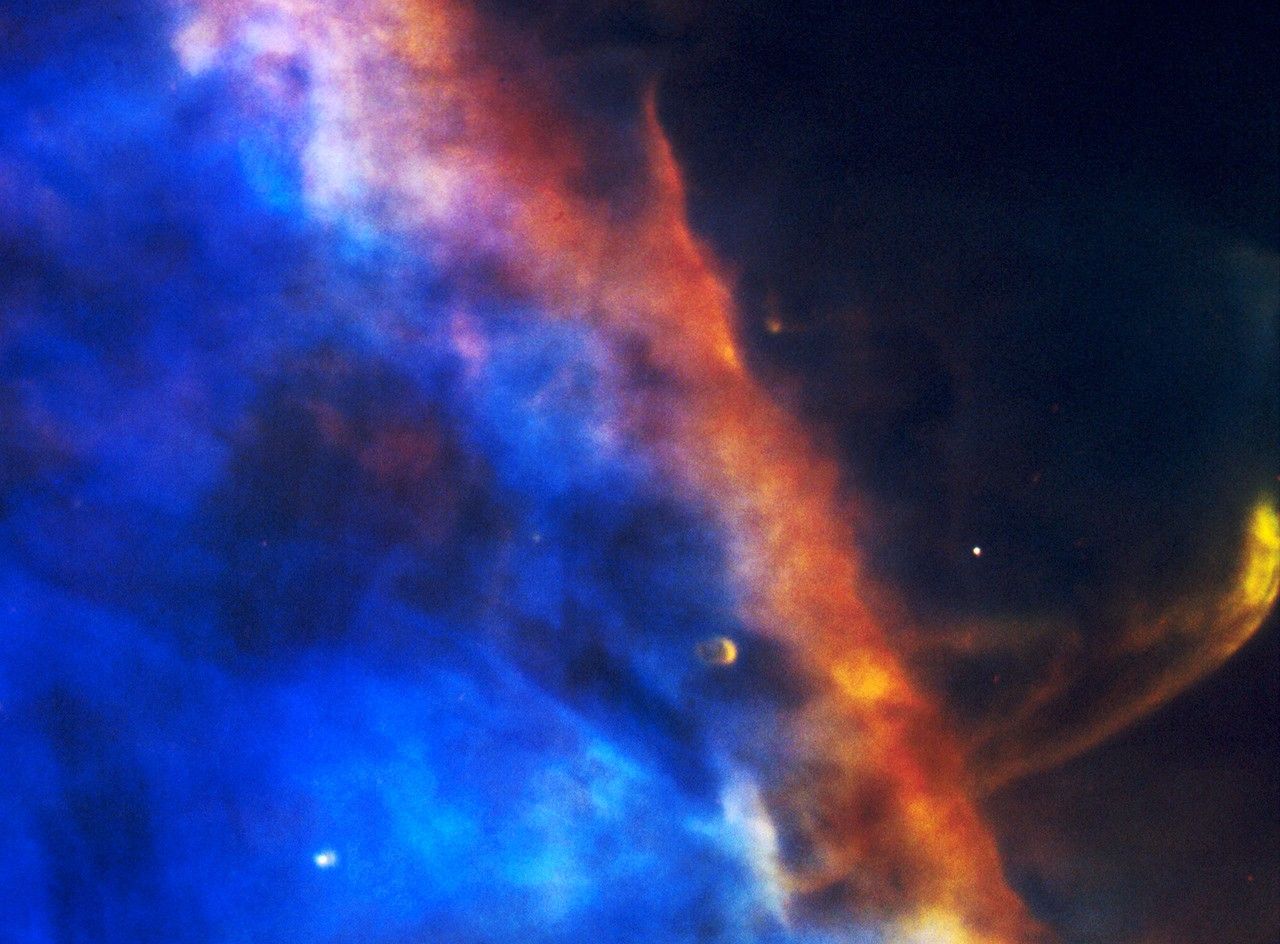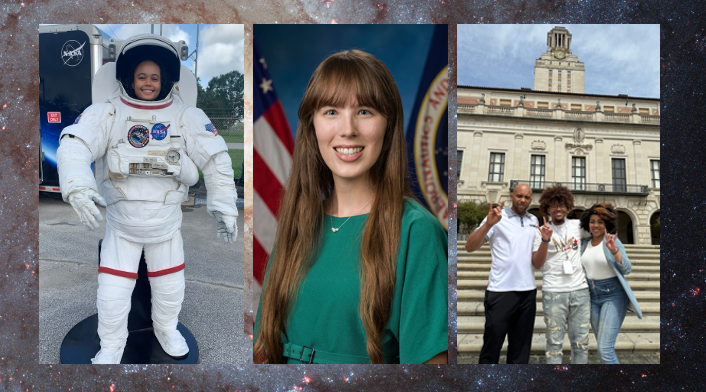Credits: NASA/CSA/University of California, Berkeley/University of Calgary/NSF
Download this video in additional formats from NASA Goddard’s Scientific Visualization Studio
The dancing lights in the image above are the aurora borealis or Northern Lights. These auroras are at their most dynamic during geomagnetic storms—often the result of solar storms called coronal mass ejections, or CMEs, that originate from the sun. The aurora shown above occurred as the result of a CME that erupted from the sun early on Mar. 15, 2013. Some 46 hours later, early on Mar. 17, 2013, this CME struck Earth’s magnetic field, depositing and storing energy in Earth’s magnetosphere. When this energy was released, charged particles from the magnetosphere were sent rushing down towards Earth’s atmosphere where they collided with neutral particles, creating the brilliant aurora.
Rather than being caused by a CME, this week’s auroras are the result of a high-speed solar wind stream flowing from what’s called a coronal hole—an area where the sun’s magnetic field opens and thus has lower density allowing solar material to escape. Once it arrives, a high-speed solar wind stream effects the magnetosphere similar to a CME, sending charged particles rocketing down towards Earth’s surface, where they collide with the atmosphere and create glowing auroras.
These aurora images were taken from the ground looking up with a network of all-sky cameras spread across Canada, studying auroras in collaboration with NASA’s Time History of Events and Macroscale Interactions during Substorms, or THEMIS, mission. Taking images of aurora from the ground in conjunction with satellite data taken from above the atmosphere gives scientists a more comprehensive picture of how and why the aurora form. The ground-based camera network is also observing this week’s auroras.
The aurora data is provided courtesy of S. Mende at University California Berkeley and E. Donovan at the University of Calgary, logistical support in fielding and data retrieval from the ground-based stations is provided by the Canadian Space Agency. The array of aurora images is funded by NSF in support of GIMNAST through grant AGS-1004736.
Related Link
Sarah Frazier
NASA’s Goddard Space Flight Center, Greenbelt, Md.





























